A relatively new development in the world of fluid dispensers, the non-contact jet dispenser uses a jetting mechanism to drop fluids from a distance on to the substrate, so that the nozzle never touches the surface of the product. Jet dispensing is performed by high speed dot pulsations from the nozzle, therefore dot dispensing as well as connecting these dots to form line dispensing can be achieved.
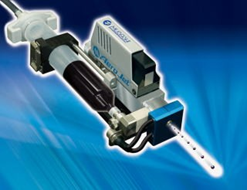
These jetting solutions are developed by Musashi Engineering. Though relatively new in the U.S. market, Musashi Engineering is a global leader in fluid dispensing systems for industrial automation, and their product developers have fine-tuned their dispensers to provide the highest accuracy and lowest product rejection rates possible.
See some applications of the jet dispenser in this video.
The guide below goes over some of the unique benefits the jetting systems can bring to the table, and also the various jet dispenser models available.
Unique Benefits of Jet Dispensers
Z-axis flexibility:
Unlike traditional contact type dispensers, the fluid is jetted from a distance before making contact with the substrate. This means the gap between the nozzle to the substrate surface doesn’t need to be as precisely controlled. Therefore, the dispense accuracy is not compromised when working with uneven surfaces, and there is a much smaller risk of scraping the target.
Speed:
The fastest jets have a frequency of over 1000Hz so dotting and line dispensing applications can be done at high speeds. Precise positioning in the z-axis is not required, so eliminating the z-movement also contributes to higher cycle times.
No nozzle contamination:
Non-contact dispensing is ideal for pharmaceutical applications because the nozzle never touches the surface of the substrate, meaning there’s no risk of contamination from one surface to another.
This clean dispensing is also why non-contact dispensers are increasingly used in the emerging field of 3D bioprinting, in which living cells are dispensed into a gel scaffold where they can grow to form transplantable tissues.
Reaching hard to access spots:
Jetting can be done from a distance, so fluids can be dispensed in hard to reach areas with various obstructions limiting access to the syringe or deep gaps where nozzles cannot enter.
For a list of models, we carry on the jet dispensers, see below:
Aerojet
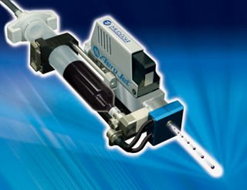
The Aerojet is the most versatile jet dispenser with a wide viscosity range of 50 – 300,000 cps. Highest shot frequency is 333Hz, and the jet can be equipped with a nozzle heater also. Some applications include epoxy based underfill, solder paste jetting, UV curable resin jetting…etc. For more information, click here.
CyberJet2

The Cyberjet2 is a jet dispenser developed specifically for low viscosity materials and has a range of 1 – 2,000 cps. Highest shot frequency is 133Hz, and the jet can be equipped with a nozzle heater also. Some applications include line dispensing for medical testing strips, jetting of solvent based fluids, other bio and pharmaceutical applications…. etc.
See a video of a multi-head Cyberjet2 application in this video.
SuperJet
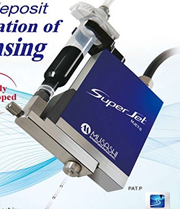
The SuperJet is the fastest jet dispenser available, with a max frequency of 1,200 Hz. The viscosity range is 50 – 300,000 cps and can be equipped with a nozzle heater. This jet is capable of jetting extremely small amounts of material in one shot, under 0.5 nanoliters per shot is possible. Applications include epoxy based underfill, silicone-based material jetting, UV curable resin jetting…etc.
Hot Melt SuperJet
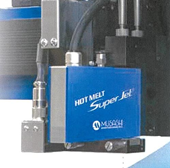
The Hotmelt SuperJet is a variation of the SuperJet series dispensers and developed to jet hot melt glues and adhesives. The nozzle and supply syringe can be heated up to 180 degC to heat up the liquid. It is capable of jetting think accurate lines which was traditionally difficult to do with hot melt type applications.
Not exactly sure which solution you need, or starting from scratch on a new automation line? Contact our experienced engineers for custom solutions tailored to your particular needs.

